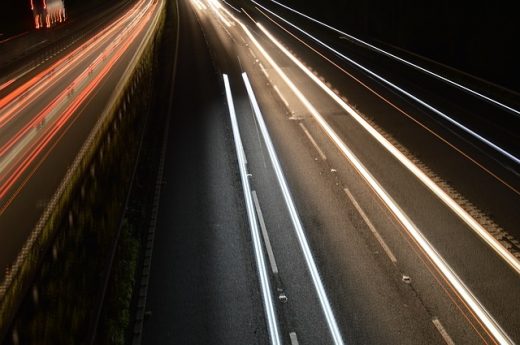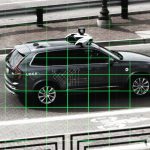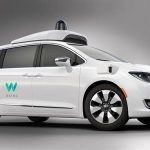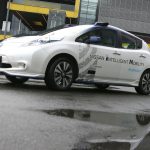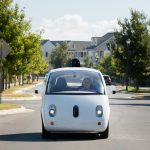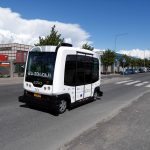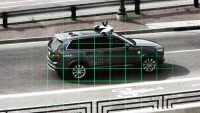What is the future of self-driving car regulation?
What is the future of self-driving car regulation?
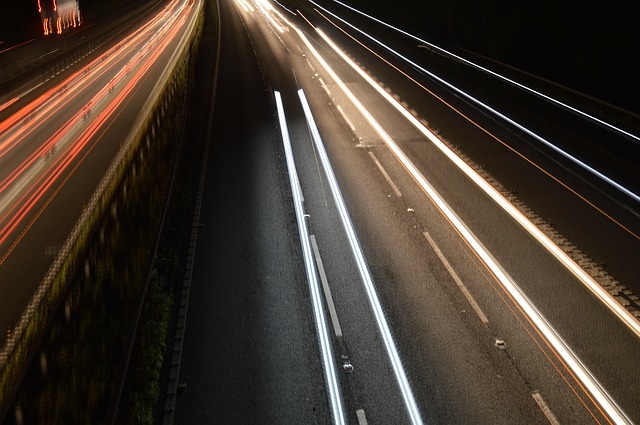
Driverless cars are making serious progress. Waymo’s most recent disengagement report showed that the self-driving car software performed much better in 2016 than it did in 2015. Despite the cars traveling more miles overall, the software system had fewer disengagements.
California requires that all companies testing self-driving cars submit a disengagement report each year. Disengagements include any event in which the software was turned off—not necessarily because of an accident, but often because of a perception discrepancy issue or a bug.
See also: Toyota unveils autonomous cars for 2020 Tokyo Olympics
Waymo’s vehicles had 0.80 disengagements per 1000 miles in 2015. Last year, the software had only 0.20 disengagements per 1000 miles. That’s a four-fold improvement and an impressive step forward for the technology. Over the course of 635,868 testing miles, there were a total of 124 disengagements in 2016—most of which occurred on streets, not highways, freeways, or interstates. In 2015, the cars traveled 424,331 miles with 341 disengagements.
While there is still a way to go before these vehicles are in widespread use, these statistics show how autonomous cars are advancing at a fast rate. How will these vehicles be regulated once they hit the streets? While California requires disengagement reports and permits, not all states do. Here is the current state of autonomous vehicle regulation and where it is headed in the coming years.
State regulations filling the gap
Currently, multiple states are developing self-driving car regulations. In December, Michigan became the first state to pass comprehensive self-driving car regulations. Four bills were signed into a law that allows for testing and use of self-driving cars on public roads. The law also legalized self-driving cars, ride-sharing and truck platoons. Most surprisingly, it stated that a driver is not required to be in the vehicle. The regulations also make the issue of liability clearer; MDOT requires that all automakers take on full liability for accidents in which the vehicle is driving autonomously and is found at fault.
Additionally, Massachusetts state senator, Jason Lewis, introduced a bill this January that would tax self-driving cars in the state at a rate of 2.5 cents per mile. The reasoning behind this tax is that it would ideally prevent car owners from operating their self-driving cars without reason. Without a driver, people may send their vehicle to complete errands, enroll it as part of a ride-sharing network, or have it drive around the block to find free parking—but Massachusetts lawmakers don’t want that extra traffic congestion on the roads. The bill would also require all autonomous vehicles to be fully electric. As a result, the tax would also help cover the state’s loss of the current gasoline tax.
When it comes to driverless cars, states are making sure that their regulations are heard. In December, Uber decided to test its self-driving cars on San Francisco streets, after successfully testing them in Pittsburgh. However, in doing so, Uber completely bypassed California’s law that requires companies to apply for a testing permit. When Uber refused to comply with the state law, California stripped their vehicle registrations, and Uber moved its cars to Arizona.
Clearly, there need to be fundamental nationwide regulations so that the country does not end up with a patchwork of self-driving car laws. Only a dozen states currently have self-driving car legislation which adds to the confusion as these autonomous vehicles continue to be tested on public roads and highways.
More widespread regulations needed
The government released their Federal Automated Vehicles Policy last September, with the goal of establishing a framework for self-driving car regulations. The policy proposes having a 15-point list of safety expectations, though no firm regulations are in place so that the technology’s advancement is not hindered. The U.S. DOT also announced a Federal Committee on Automation in January to work on the pressing matters facing transportation today. Yet with a new transportation secretary in place, and with self-driving cars advancing, states are still creating their own autonomous legislation.
While this is understandable, we must think about the practicality of these legislative actions. A state level law may end up reaching further than state lines. The nature of cars is that they will travel across state borders. If all states create their own self-driving laws, tech companies and manufacturers will have to abide by the lowest common denominator: the strictest law. While that may have been practical and easy enough for car manufacturers to do for California’s emissions law, it’s unlikely to be as simple for self-driving cars.
Until there are widespread regulation standards, states may want to keep this in mind, as it is not practical for self-driving vehicles to operate differently when they cross a state border. This would become especially difficult regarding AVs morality. There needs to be a standard of performance.
Some philosophy experts suggest that self-driving cars should be regulated similarly to the drug-approval process. These experts recommend testing autonomous cars in phases. First, regulators may simulate unforeseen situations for autonomous cars to drive through which may mirror pre-clinical trials. From there, self-driving cars could move into environments that require additional decision-making skills. As each trial is successful, the vehicles can slowly be rolled out in new settings, on more roads, and eventually, in new cities. These experts assume that over time, as the cars grow smarter, market restrictions will relax. While this process may take time at first, once the technology is refined, the regulatory process will become more efficient.
These philosophy experts recognize that self-driving cars learn from failure and experiences. Those that shy away this “trial and error” approach may prefer self-driving cars drive perfectly before they hit the streets, but that is not how experiential learning works. Cars on test tracks or only in certain cities will not be enough. They will need to demonstrate their skills on real and varied roads to prove their worth. Perhaps, government regulators could determine acceptable performance standards with help from states and technology or manufacturing companies so that there is a baseline before the vehicles move onto the next phase. There will also need to be standards for autonomous vehicle morality.
More collaboration between the government and the private sector will be necessary as we move forward to determine the best regulatory process for self-driving cars. Whether that ends up being similar to the drug approval process, or something else entirely, a combination of differing state laws across the country is not the most efficient solution for this technology. Two senators recently announced their plan to move forward on self-driving car rules this year, and stated the need for Congress to assist innovators in bringing this technology to the roads. Current federal vehicle safety standards assume a human operator so there is a need for change. Standards and laws that accommodate the new autonomous technology now will enable a smoother transition into a driverless world in the decades ahead.
Seth Birnbaum is the CEO and co-founder of EverQuote, the largest online auto insurance marketplace in the U.S.
The post What is the future of self-driving car regulation? appeared first on ReadWrite.
(36)

